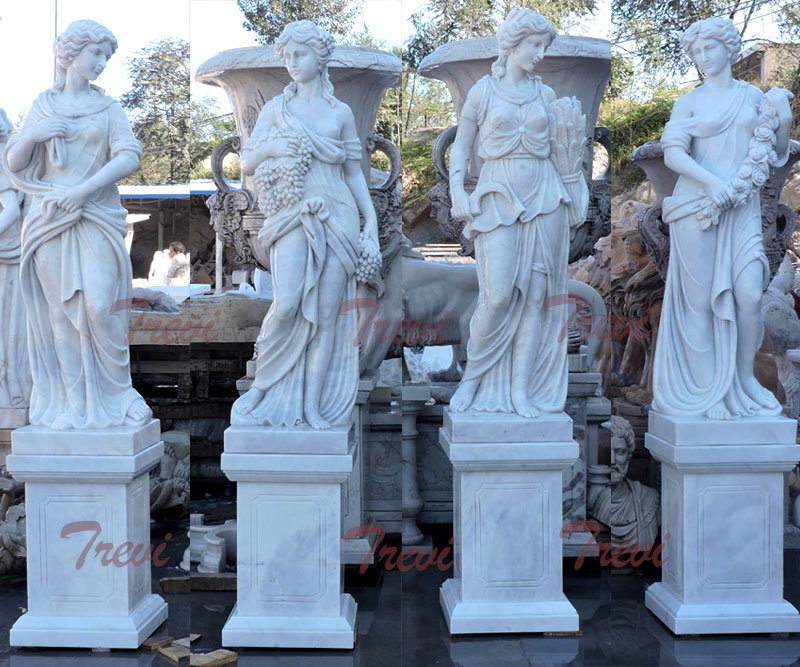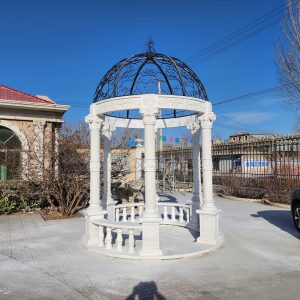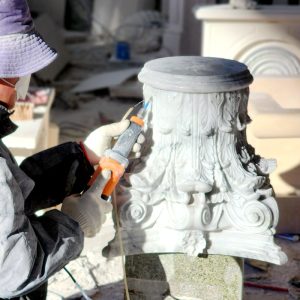Marble has long been an important material for outdoor garden sculpture and monumental compositions, notably in religious settings. Whether related to a significant event or as a mark of remembrance, a monument will often become an important focal element in an architectural space.
Marble (from the Greek marmaros meaning a white, shining stone) is a metamorphic rock formed from limestone (CaCO₃) which has been broken down under pressure and heat to recrystallise and produce a granular mosaic of calcite crystals of roughly equal size. During this process, the original sedimentary elements of a limestone are lost and a pure marble is therefore monomineralic, free from fossils and white in colour. The vast range of coloured marbles is a consequence of small amounts of impurities being incorporated with the calcite during this metamorphism.
As with all natural materials, marble is prone to varying degrees of soiling and deterioration which in turn can be detrimental to the appearance and appreciation of a piece, detracting from its significance as a work of art. Therefore cleaning aimed at refreshing or restoring a marble surface is often considered appropriate.








